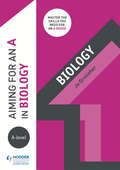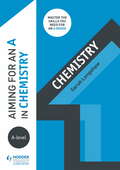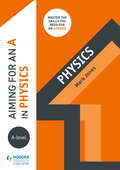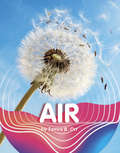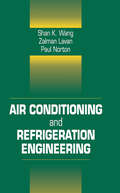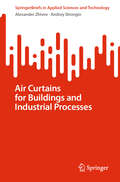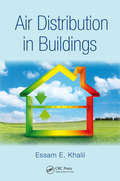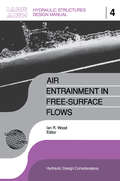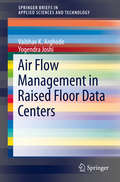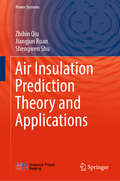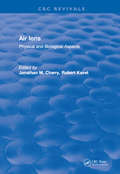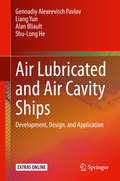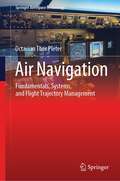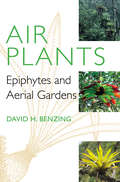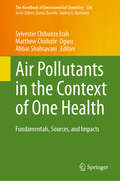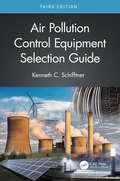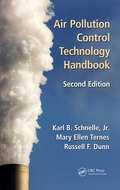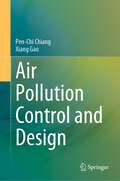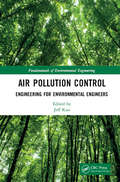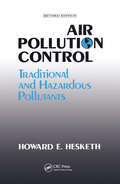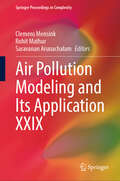- Table View
- List View
Aiming for an A in A-level Biology
by Jo OrmisherExam Board: AQA, CCEA, Edexcel, OCR, WJEC/Eduqas Level: A-level Subject: Biology First teaching: September 2015 First exams: Summer 2017Master the skills you need to set yourself apart and hit the highest grades; this year-round course companion develops the higher-order thinking skills that top-achieving students possess, providing step-by-step guidance, examples and tips for getting an A grade.Written by experienced author and teacher Jo Ormisher, Aiming for an A in A-level Biology:- Helps you develop the 'A grade skills' of analysis, evaluation, creation and application- Takes you step by step through specific skills you need to master in A-level Biology, including scientific reading, quantitative and practical skills , so you can apply these skills and approach each exam question as an A/A* candidate- Clearly shows how to move up the grades with sample responses annotated to highlight the key features of A/A* answers- Helps you practise to achieve the levels expected of top-performing students, using in-class or homework activities and further reading tasks that stretch towards university-level study- Perfects exam technique through practical tips and examples of common pitfalls to avoid - Cultivates effective revision habits for success, with tips and strategies for producing and using revision resources- Supports all exam boards, outlining the Assessment Objectives for reaching the higher levels under the AQA, Edexcel, OCR, WJEC/Eduqas and CCEA specifications
Aiming for an A in A-level Biology
by Jo OrmisherExam Board: AQA, CCEA, Edexcel, OCR, WJEC/Eduqas Level: A-level Subject: Biology First teaching: September 2015 First exams: Summer 2017Master the skills you need to set yourself apart and hit the highest grades; this year-round course companion develops the higher-order thinking skills that top-achieving students possess, providing step-by-step guidance, examples and tips for getting an A grade.Written by experienced author and teacher Jo Ormisher, Aiming for an A in A-level Biology:- Helps you develop the 'A grade skills' of analysis, evaluation, creation and application- Takes you step by step through specific skills you need to master in A-level Biology, including scientific reading, quantitative and practical skills , so you can apply these skills and approach each exam question as an A/A* candidate- Clearly shows how to move up the grades with sample responses annotated to highlight the key features of A/A* answers- Helps you practise to achieve the levels expected of top-performing students, using in-class or homework activities and further reading tasks that stretch towards university-level study- Perfects exam technique through practical tips and examples of common pitfalls to avoid - Cultivates effective revision habits for success, with tips and strategies for producing and using revision resources- Supports all exam boards, outlining the Assessment Objectives for reaching the higher levels under the AQA, Edexcel, OCR, WJEC/Eduqas and CCEA specifications
Aiming for an A in A-level Chemistry
by Sarah LongshawExam Board: AQA, Edexcel, CCEA, OCR, WJEC EduqasLevel: A-levelSubject: ChemistryFirst teaching: September 2015First exams: Summer 2017 Master the skills you need to set yourself apart and hit the highest grades; this year-round course companion develops the higher-order thinking skills that top-achieving students possess, providing step-by-step guidance, examples and tips for getting an A grade.Written by experienced author and teacher Sarah Longshaw, Aiming for an A in A-level Chemistry:- Helps you develop the 'A grade skills' of analysis, evaluation, creation and application- Takes you step by step through specific skills you need to master in A-level Chemistry, including scientific reading, quantitative and practical skills, so you can apply these skills and approach each exam question as an A/A* candidate- Clearly shows how to move up the grades with sample responses annotated to highlight the key features of A/A* answers- Helps you practise to achieve the levels expected of top-performing students, using in-class or homework activities and further reading tasks that stretch towards university-level study- Perfects exam technique through practical tips and examples of common pitfalls to avoid - Cultivates effective revision habits for success, with tips and strategies for producing and using revision resources- Supports all exam boards, outlining the Assessment Objectives for reaching the higher levels under the AQA, Edexcel, OCR, WJEC/Eduqas and CCEA specifications.
Aiming for an A in A-level Chemistry
by Sarah LongshawExam Board: AQA, Edexcel, CCEA, OCR, WJEC EduqasLevel: A-levelSubject: ChemistryFirst teaching: September 2015First exams: Summer 2017 Master the skills you need to set yourself apart and hit the highest grades; this year-round course companion develops the higher-order thinking skills that top-achieving students possess, providing step-by-step guidance, examples and tips for getting an A grade.Written by experienced author and teacher Sarah Longshaw, Aiming for an A in A-level Chemistry:- Helps you develop the 'A grade skills' of analysis, evaluation, creation and application- Takes you step by step through specific skills you need to master in A-level Chemistry, including scientific reading, quantitative and practical skills, so you can apply these skills and approach each exam question as an A/A* candidate- Clearly shows how to move up the grades with sample responses annotated to highlight the key features of A/A* answers- Helps you practise to achieve the levels expected of top-performing students, using in-class or homework activities and further reading tasks that stretch towards university-level study- Perfects exam technique through practical tips and examples of common pitfalls to avoid - Cultivates effective revision habits for success, with tips and strategies for producing and using revision resources- Supports all exam boards, outlining the Assessment Objectives for reaching the higher levels under the AQA, Edexcel, OCR, WJEC/Eduqas and CCEA specifications.
Aiming for an A in A-level Physics
by Mark JonesExam Board: AQA, Edexcel, CCEA, OCR, WJEC EduqasLevel: A-levelSubject: PhysicsFirst teaching: September 2015First exams: Summer 2017Master the skills you need to set yourself apart and hit the highest grades; this year-round course companion develops the higher-order thinking skills that top-achieving students possess, providing step-by-step guidance, examples and tips for getting an A grade.Written by experienced author and teacher Mark Jones, Aiming for an A in A-level Physics:- Helps you develop the 'A grade skills' of analysis, evaluation, creation and application- Takes you step by step through specific skills you need to master in A-level Physics, including scientific reading, quantitative and practical skills, so you can apply these skills and approach each exam question as an A/A* candidate- Clearly shows how to move up the grades with sample responses annotated to highlight the key features of A/A* answers- Helps you practise to achieve the levels expected of top-performing students, using in-class or homework activities and further reading tasks that stretch towards university-level study- Perfects exam technique through practical tips and examples of common pitfalls to avoid - Cultivates effective revision habits for success, with tips and strategies for producing and using revision resources- Supports all exam boards, outlining the Assessment Objectives for reaching the higher levels under the AQA, Edexcel, OCR, WJEC/Eduqas and CCEA specifications
Aiming for an A in A-level Physics
by Mark JonesExam Board: AQA, Edexcel, CCEA, OCR, WJEC EduqasLevel: A-levelSubject: PhysicsFirst teaching: September 2015First exams: Summer 2017Master the skills you need to set yourself apart and hit the highest grades; this year-round course companion develops the higher-order thinking skills that top-achieving students possess, providing step-by-step guidance, examples and tips for getting an A grade.Written by experienced author and teacher Mark Jones, Aiming for an A in A-level Physics:- Helps you develop the 'A grade skills' of analysis, evaluation, creation and application- Takes you step by step through specific skills you need to master in A-level Physics, including scientific reading, quantitative and practical skills, so you can apply these skills and approach each exam question as an A/A* candidate- Clearly shows how to move up the grades with sample responses annotated to highlight the key features of A/A* answers- Helps you practise to achieve the levels expected of top-performing students, using in-class or homework activities and further reading tasks that stretch towards university-level study- Perfects exam technique through practical tips and examples of common pitfalls to avoid - Cultivates effective revision habits for success, with tips and strategies for producing and using revision resources- Supports all exam boards, outlining the Assessment Objectives for reaching the higher levels under the AQA, Edexcel, OCR, WJEC/Eduqas and CCEA specifications
Ain't Love Grand!: Earthworms to Elephant Seals (Chicago Shorts)
by Marty CrumpThe natural world is filled with diverse—not to mention quirky and odd—animal behaviors. Consider the male praying mantis that continues to mate after being beheaded; the insects, insects, and birds that offer gifts of food in return for sex; the male hip-pocket frog that carries his own tadpoles; the baby spiders that dine on their mother; or the starfish that sheds an arm or two to escape a predator's grasp. In Ain’t Love Grand, Marty Crump—a tropical field biologist well known for her work with the reproductive behavior of amphibians—examines the bizarre conduct of animals as they mate, parent, feed, defend themselves, and communicate. More importantly, Crump points out that diverse and unrelated animals often share seemingly erratic behaviors—evidence, Crump argues, that these natural histories, though outwardly weird, are actually successful ways of living.
Air (Earth Materials and Systems)
by Tamra B. OrrAll living things need air to survive. Air also protects Earth. Discover why air is an important part of nature!
Air Conditioning and Refrigeration Engineering (Engineering Handbooks)
by Shan K. Wang, Zalman Lavan and Paul NortonAn air conditioning system consists of components and equipment arranged in sequential order to control and maintain an indoor environment. The goal is to provide a healthy and comfortable climate with acceptable air quality while being energy efficient and cost effective. Air Conditioning and Refrigeration Engineering covers all types of systems from institutional and commercial to residential.The book supplies the basics of design, from selecting the optimum system and equipment to preparing the drawings and specifications. It discusses the four phases of preparing a project: gathering information, developing alternatives, evaluating alternatives, and selling the best solution. In addition, the author breaks down the responsibilities of the engineer, design documents, computer aided design, and government codes and standards.Air Conditioning and Refrigeration Engineering provides you with an easy reference to all aspects of the topic. This resource addresses the most current areas of interest, such as computer-aided design and drafting, desiccant air conditioning and energy conservation. It is a thorough and convenient guide to air conditioning and refrigeration engineering.
Air Curtains for Buildings and Industrial Processes (SpringerBriefs in Applied Sciences and Technology)
by Alexander Zhivov Andrey StronginThis book is based on several decades of authors’ research and practical experience in the areas of industrial and commercial buildings ventilation and energy efficiency as well as in process optimization in different types of industrial facilities. The Book discusses different types of air curtains used around the world and describes design, applications, pros and cons and examples for each type of air curtain. The book is illustrated with schematics of air curtains and pictures from their real-life implementation from around-the -world. To compare various design of air curtains, authors propose several indicators/efficiency criteria, which address effectiveness of air curtains, their energy and performance efficiency. The target audience for this book are energy and process engineers and designers of large commercial and industrial facilities, warehouses, and hangars.
Air Distribution in Buildings (Mechanical and Aerospace Engineering Series #54)
by Essam E. KhalilAir Distribution in Buildings is a concise and practical guide to air distribution system design and managing air conditioning systems in buildings. Making use of 40 years of experience in the design of air conditioning and ventilations systems, and other electromechanical services, this structured reference for built environment engineering offers
Air Entrainment in Free-surface Flow: IAHR Hydraulic Structures Design Manuals 4
by Ian R. WoodThis monograph is aimed at the practising hydraulic engineer. Work on it commenced at Professor Naudascher's instigation in 1982. Over the next six years all or some of the authors discussed progress at IAHR sponsored conferences at Esslingen, Melbourne, Lausanne and Beijing. With the authors scattered throughout the world, and all with other responsibilities, progress was bound to be slow. Completion was further delayed by the great increase in published technical literature in this area over the period 1982-1988. This literature continues to expand and with it our understanding of the air water flow phenomena. The monograph must therefore be seen as the authors' views on the state of the art around 1988. More recent references have been included for completeness.This monograph has been a joint effort with most authors making suggestions and contributions to more than one chapter. Nevertheless, the chapter authors are primarily responsible for the material in their chapters.Throughout the monograph symbols are defined when they are fist introduced and a list of symbols is included at the end of each chapter.Many other people have contributed to this monograph, but the authors would particularly like to acknowledge the assistance given by Professor John McNown who has read, commented on and improved the style of the complete monograph.
Air Flow Management in Raised Floor Data Centers (SpringerBriefs in Applied Sciences and Technology)
by Yogendra Joshi Vaibhav K. ArghodeThe Brief discuss primarily two aspects of air flow management in raised floor data centers. Firstly, cooling air delivery through perforated tiles will be examined and influence of the tile geometry on flow field development and hot air entrainment above perforated tiles will be discussed. Secondly, the use of cold aisle containment to physically separate hot and cold regions, and minimize hot and cold air mixing will be presented. Both experimental investigations and computational efforts are discussed and development of computational fluid dynamics (CFD) based models for simulating air flow in data centers is included. In addition, metrology tools for facility scale air velocity and temperature measurement, and air flow rate measurement through perforated floor tiles and server racks are examined and the authors present thermodynamics-based models to gauge the effectiveness and importance of air flow management schemes in data centers.
Air Insulation Prediction Theory and Applications (Power Systems)
by Zhibin Qiu Jiangjun Ruan Shengwen ShuThis book proposes the air insulation prediction theory and method in the subject of electrical engineering. Prediction of discharge voltage in different cases are discussed and worked out by simulation. After decades, now bottlenecks of traditional air discharge theories can be solved with this book. Engineering applications of the theory in air gap discharge voltage prediction are introduced. This book serves as reference for graduate students, scientific research personnel and engineering staff in the related fields.
Air Ions: Physical and Biological Aspects
by Jonathan M. CharryAir Ions: Physical and Biological Aspects fully develops two areas that are important for a comprehensive understanding of the subject of air ions: (1) the physical/chemical nature of ions, and (2) their potential interaction with biological systems. The reader is led through a series of none chapter, the first five of which lay the basis for understanding ions in the context of naturally and artificially created environments. The final four chapters are well situated to discuss the literature and history connected with the search for ion-induced biological effects.
Air Lubricated and Air Cavity Ships: Development, Design, and Application
by Alan Bliault Liang Yun Gennadiy Alexeevitch Pavlov Shu-Long HeAir Lubrication and Air Cavity Technology is a major development that has emerged in recent years as a means to reduce resistance and powering for many types of ships, and an efficient design for high speed marine vessels. This book introduces the mechanisms for boundary layer drag reduction and concepts studied in early research work. Air bubble and sheet lubrication for displacement vessels is outlined and the key projects introduced. Generation of low volume flow air cavities under the hull of displacement, semi displacement and planing vessels are introduced together with theoretical and empirical analysis and design methods. Resistance reduction, power reduction and fuel efficiency are covered for both displacement and high speed vessels. Air layer and air cavity effects on vessel static and dynamic stability are covered, linked to regulatory requirements such as IMO. Seaway motions and reduced impact load of high speed craft in waves are discussed including model test results. Integration of propulsion systems for optimum powering is summarized. A design proposal for a wave piercing air cavity craft is included in an appendix. A comprehensive listing of document resources and internet locations is provided for further research.
Air Navigation: Fundamentals, Systems, and Flight Trajectory Management (Springer Aerospace Technology)
by Octavian Thor PleterThis book takes a new approach to air navigation, extending the classic scope of positioning and guidance to efficient and safe 4D flight trajectory management. Modern air navigation aims at flight trajectories optimisation. There is an infinite number of solutions to the classic navigation problem of flying from one airport to another, but most of them are wasteful of resources and even risky. Minimising all costs and risks incurred by the 4D flight trajectory makes air navigation both efficient and safe, which are key factors in air navigation services. Beyond minimising fuel burn and CO2, efficiency addresses non-CO2 emissions and noise. This is a visually intensive book, using examples and case studies to illustrate the concepts, the physics of navigation and the mathematical models involved. Numerical examples reflect its problem-solving nature. It is useful to aerospace students, engineers, pilots, air traffic controllers, technicians, and scientists curious about aviation.
Air Plants: Epiphytes and Aerial Gardens
by David H. BenzingOften growing far above the ground, "air plants" (or epiphytes) defy many of our common perceptions about plants. The majority use their roots only for attachment in the crowns of larger, usually woody plants-or to objects such as rocks and buildings-and derive moisture and nutrients from the atmosphere and by collecting falling debris. Only the mistletoes are true parasites. Epiphytes are not anomalies and there are approximately 28,000 species-about 10 percent of the higher or vascular plants-that grow this way. Many popular houseplants, including numerous aroids, bromeliads, ferns, and orchids, rank among the most familiar examples. In Air Plants, David H. Benzing takes a reader on a tour of the many taxonomic groups to which the epiphytes belong and explains in nontechnical language the anatomical and physiological adaptations that allow these plants to conserve water, thrive without the benefit of soil, and engage in unusual relationships with animals such as frogs and ants.Benzing's comprehensive account covers topics including ecology, evolution, photosynthesis and water relations, mineral nutrition, reproduction, and the nature of the forest canopy as habitat for the free-living and parasitic epiphytes. It also pays special attention to important phenomena such as adaptive trade-offs and leaf economics. Drawing on the author's deep experience with epiphytes and the latest scientific research, this book is accessible to readers unfamiliar with technical botany; it features a lavish illustration program, references, a glossary, and tables.
Air Pollutants in the Context of One Health: Fundamentals, Sources, and Impacts (The Handbook of Environmental Chemistry #134)
by Sylvester Chibueze Izah Matthew Chidozie Ogwu Abbas ShahsavaniThis book reviews air pollutants and their effects on human health, biodiversity, and environmental quality in the context of the One Health framework. Written by experts in the field, the book covers topics such as natural and anthropogenic sources of air pollutants, air pollutants classification based on their chemical composition, physical properties, and origins, and consequences of air pollution on ecosystems, wildlife, and human communities. In this book, readers will find a detailed examination of pollutants, such as particulate matter, volatile organic compounds, and greenhouse gases, and will learn about the mechanisms by which pollutants impact, for instance, the respiratory, cardiovascular, and neurological systems. The book highlights the need for understanding the different pollutants and their One Health effects as a foundation for developing effective regulations, emission controls, cleaner technologies, and promoting lifestyle changes. The book also offers a global perspective on air pollution, and discusses the disproportionate impacts of air pollution on vulnerable populations. In alignment with the United Nations Sustainable Development Goals (SDG), specifically SDG 3 (Good Health and Well-being), SDG 7 (Affordable and Clean Energy), and SDG 11 (Sustainable Cities and Communities), this book takes a focused approach to the One Health implications of various air pollutants and is an important contribution to the global effort to mitigate the impact of air pollution on human health, biodiversity security, and environmental quality. Together with its companion work “Sustainable Strategies for Air Pollution Mitigation”, this book is a valuable resource for students, researchers, policymakers, and anyone seeking a comprehensive perspective on this critical environmental and public health challenge.
Air Pollution Control Equipment Selection Guide
by Kenneth C. SchifftnerThis new edition of Air Pollution Control Equipment Selection Guide builds upon the successes of previous editions that developed a detailed discussion on various technologies used for air pollution control. This book covers a wide range of equipment and provides a good overview of the related principles and applications. A particularly valuable feature are the practical examples, not commonly available in other books. Based on the author’s fifty years of experience in applying and operating air pollution control equipment, this book provides easy-to-read information on basic air pollution control technology and is the quintessential resource for the busy engineer and for those who do not have formal training in air pollution control.FEATURES OF THE THIRD EDITION Uniform and consistent applications information for comparing the effectiveness of different technologies. Provides answers to questions about how to reduce operating costs and how to achieve peak performance. Concise descriptions of each equipment with diagnostics and testing suggestions. New chapters on optimization techniques that help readers deal with different types of hardware for better performance and efficacy.
Air Pollution Control Technology Handbook
by Karl B. Schnelle Jr. Russell F. Dunn Mary Ellen TernesA detailed reference for the practicing engineer, Air Pollution Control Technology Handbook, Second Edition focuses on air pollution control systems and outlines the basic process engineering and cost estimation required for its design. Written by seasoned experts in the field, this book offers a fundamental understanding of the factors resulting i
Air Pollution Control and Design
by Pen-Chi Chiang Xiang GaoThis book focuses specifically on the environmental issues related to the air pollution control and design. It is divided into four parts: (1) Fundamentals of air pollution control, (2) fundamentals of energy utilization, (3) gaseous control and design, and (4) particulate control and design, each consisting of four to six chapters. The topics covered in this book not only introduce the basic concepts of air pollution control and design but also address the fundamentals of energy utilization in the context of good engineering practice and policy instruments. It also features several innovative technologies and integrated methodologies relating to gaseous and particulate matter control and design. To facilitate technology integration and meet the need for comprehensive information on sustainable development, the book discusses a wide range of areas concerning the principles, applications, and assessment of air pollution control and design and thermodynamics, heat transfer, advanced combustion and renewable energy for energy utilization. It also features regulations and policy instruments adopted around the globe as well as several case studies. Presenting the emerging challenges, new concepts, innovative methodologies, and resolving strategies, as well as illustrative and inspiring case studies, it appeals to a wide range of readers, such as researchers, graduate students, engineers, policy makers, and entrepreneurs.
Air Pollution Control: Fundamentals and Applications (Fundamentals of Environmental Engineering)
by Jeff KuoAir pollution control and air quality engineering are some of the key subjects in any environmental engineering curriculum. This book will cover topics that are fundamental to pollution control engineers and professionals, including air pollution and its management through regulatory approaches, calculating and estimating emissions, and appying con
Air Pollution Control: Traditional Hazardous Pollutants, Revised Edition
by Howard D. HeskethSince the first edition was printed in 1991, there have only been minor changes in air regulations. The opposing "trenches" used by environmental regulation proponents have deepened as each side increases their database. Agencies and environmental groups have backed off a little in issues such as bubble policies and enforcement time tables. This has made it extremely difficult for equipment vendors to anticipate industry requirements. Overall, the current market projections are not very favorable for the new equipment suppliers. In contrast, the service organizations are seeing increasing need for their help in areas such as dispersion modeling, troubleshooting and testing. Existing systems are being improved upon to keep them in operation. There remains a continuous need for up-to-date references and training materials to serve these needs, and it is for this purpose this revised edition is dedicated.
Air Pollution Modeling and Its Application XXIX (Springer Proceedings in Complexity)
by Rohit Mathur Clemens Mensink Saravanan ArunachalamThis book states that current developments in air pollution modeling are explored as a series of contributions from researchers at the forefront of their field. This newest contribution on air pollution modeling and its application is focused on local, urban, regional and intercontinental modeling; long-term modeling and trend analysis; data assimilation and air quality forecasting; model assessment and evaluation; aerosol transformation. Additionally, this work also examines the relationship between air quality and human health and the effects of climate change on air quality. This work is a collection of selected papers presented at the 39th International Technical Meeting on Air Pollution Modeling and its Application, held in Chapel Hill, North Carolina, USA, May 22-26, 2023. The book is intended as reference material for students and professors interested in air pollution modeling at the graduate level as well as researchers and professionals involved in developing and utilizing air pollution models.
